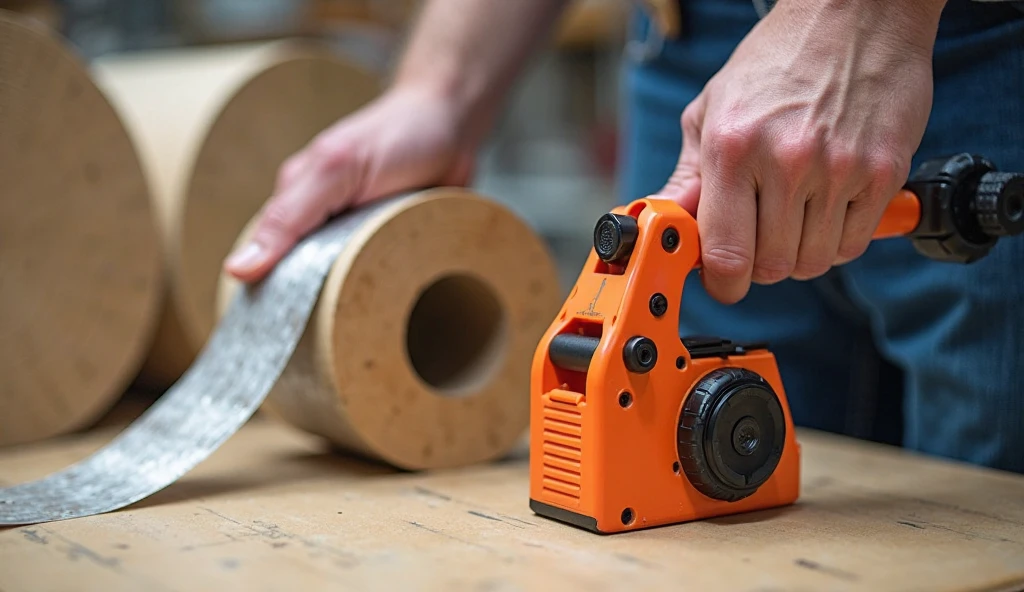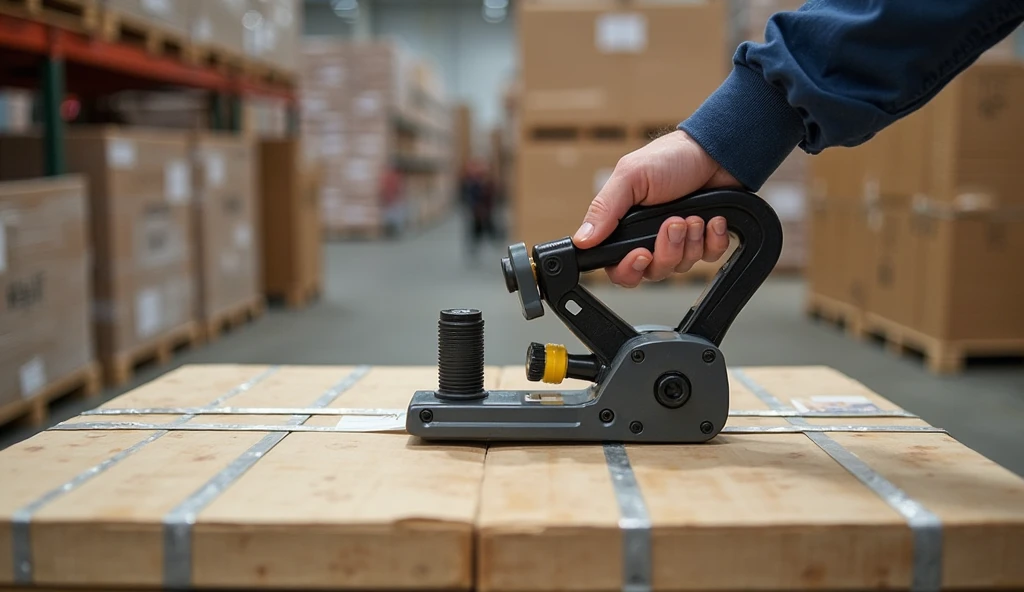Strapping tensioners play a crucial role in the packaging industry by ensuring products are securely strapped for transport. They consist of several key components, including the tensioning wheel, strap dispenser, and cutting blade. Each component has a significant function that contributes to the overall efficiency of the tensioner. The tensioning wheel is essential in applying the necessary tension to the strapping material, securing various loads firmly. The strap dispenser allows for the controlled and smooth release of the strapping material, minimizing fraying and ensuring a precise cut to maintain operational efficiency. It's important to understand how these components interact, as this knowledge can enhance the tensioner's performance and lifespan. By optimizing each part's functionality, businesses can ensure the reliable and efficient packaging of goods.

There are two main types of strapping tensioners: manual and electric, each catering to different packaging needs. Manual tensioners are typically more affordable and portable, making them ideal for low-volume operations. They require minimal maintenance, which can be a cost-saver in environments with limited budgets. On the other hand, electric tensioners offer higher efficiency and consistency, especially beneficial in high-volume settings. Although they require a power source, they significantly reduce operator fatigue. Understanding the pros and cons of each type is crucial for businesses to decide which tensioner aligns best with their workflow and packaging volumes. Manual tensioners may suit companies with sporadic strapping needs, while electric tensioners are better for continuous, high-volume packaging tasks.
Before using a strapping tensioner, it's imperative to have all your packaging materials ready and well-matched for the task at hand. Ensuring that straps, boxes, and pallets are compatible with the load size is crucial in preventing any mishaps during transport. Check the strength specifications of your straps, especially when dealing with heavy loads, to ensure they can withstand the necessary force. Additionally, keeping your workspace organized facilitates a more streamlined strapping process, significantly improving efficiency and reducing potential errors.
Proper strap positioning is essential for effective packaging. Ensure that the straps encircle your product securely but do not cut into the edges, which can weaken the integrity of the packaging. It is crucial to maintain equal tension and avoid slack to prevent the cargo from shifting during transit. Utilizing markers or guides on the workbench can aid operators in consistently positioning straps accurately, thus minimizing the risk of accidents and improving overall packaging quality.
Adjusting tension levels according to different load requirements is crucial for safe transport. Lighter loads might only need a lower tension setting, while heavier loads require more tension to secure them adequately. Many tensioners are designed with adjustable settings to accommodate various load sizes, optimizing security while minimizing the risk of damaging the packaging or the product itself. Reviewing and adjusting the tension settings regularly as product loads change is vital to maintaining reliable transport and ensuring that your products arrive at their destination safely.
Selecting the appropriate strapping material based on the tensioner type is crucial for maximizing performance and reliability. Different tensioners are designed to operate best with specific materials, and sticking to these pairings can significantly enhance operational efficiency. For example, manual tensioners often work well with polypropylene straps due to their flexibility and ease of handling, while electric models are better suited for robust polyester straps known for their strength. By choosing materials that align with the manufacturer's recommendations, businesses can not only reduce wear and tear on both the straps and equipment but also ensure consistent strapping performance. This strategic approach helps in maintaining the integrity of the packaging, ultimately leading to fewer disruptions and enhanced productivity.
In high-volume packaging operations, striking the right balance between speed and security is essential. Rapid strapping processes can sometimes compromise the force applied, risking the integrity of the package during transit. To counter this, integrating automated systems or conveyor belts can enhance speed while maintaining the necessary tension levels. These systems can seamlessly work with tensioners, ensuring each package is securely strapped without slowing down the pace. Furthermore, it is crucial to regularly monitor tension settings and assess the overall effectiveness of the strapping system. This routine evaluation will help maintain quality assurance and adapt to any changes in packaging requirements, ensuring that speed does not come at the expense of security.
Regular cleaning and lubrication of strapping tensioners are essential for maintaining performance and prolonging equipment life. Such practices prevent buildup of debris and dust, which can impair the tensioning mechanism. Establishing a routine that includes cleaning debris and residues from moving parts, and applying lubricant to the tensioning mechanisms as recommended by manufacturers can significantly enhance equipment performance. Creating a maintenance log can help in tracking cleanliness and function, making it easier to spot issues before they lead to equipment failure. This proactive approach can prevent unexpected downtime and extend the lifespan of your equipment.
Being proactive in identifying wear patterns on critical components like cutting blades and tensioning wheels can prevent costly breakdowns. These components are essential to the reliable operation of strapping tensioners and identifying wear early can save both time and money. Regular visual inspections should be conducted and components that show signs of excessive wear should be replaced to ensure ongoing operational safety. Training operators on recognizing wear can enhance accountability and facilitate a safer working environment. This not only contributes to the longevity of the equipment but also ensures that it operates efficiently and safely, reducing the risk of accidents and malfunctions.

Strap slippage is a common issue that arises due to incorrect tension settings on the strapping machine. To resolve this, begin by reviewing the tension adjustments and make necessary modifications to ensure optimal performance. Strap positioning also plays an essential role; make sure the strap is correctly placed around the load to prevent misalignment, which can cause slippage during transit. Regular operator training is vital, as it helps them to promptly identify and remedy slippage issues, thereby enhancing overall packaging efficiency. By integrating these practices, businesses can significantly reduce the occurrence of strap slippage and improve packaging solutions.
Inconsistent tension output can severely compromise packaging quality and integrity. The first step in troubleshooting this issue is to inspect the tensioning mechanisms for any wear that could impact performance. Loose or malfunctioning components should be checked and tightened as necessary to ensure uniform tension application across packages. Operator technique is equally pivotal; especially with manual tensioners, where technique variance can lead to inconsistencies. Proper training and emphasis on standardized methods can help achieve consistent outcomes. By addressing these areas, companies can maintain high standards of packaging quality and operational efficiency.
The two main types of strapping tensioners are manual and electric tensioners. Manual tensioners are portable and cost-effective for low-volume needs, whereas electric tensioners are ideal for high-volume operations with consistent efficiency and reduced operator fatigue.
To prevent strap slippage, ensure the tension settings are optimized and the strap is properly positioned around the load. Regularly train operators to identify and address slippage promptly.
Routine cleaning and lubrication are key maintenance practices. Keeping a maintenance log and performing visual inspections for wear can prevent breakdowns and extend the life of your equipment.